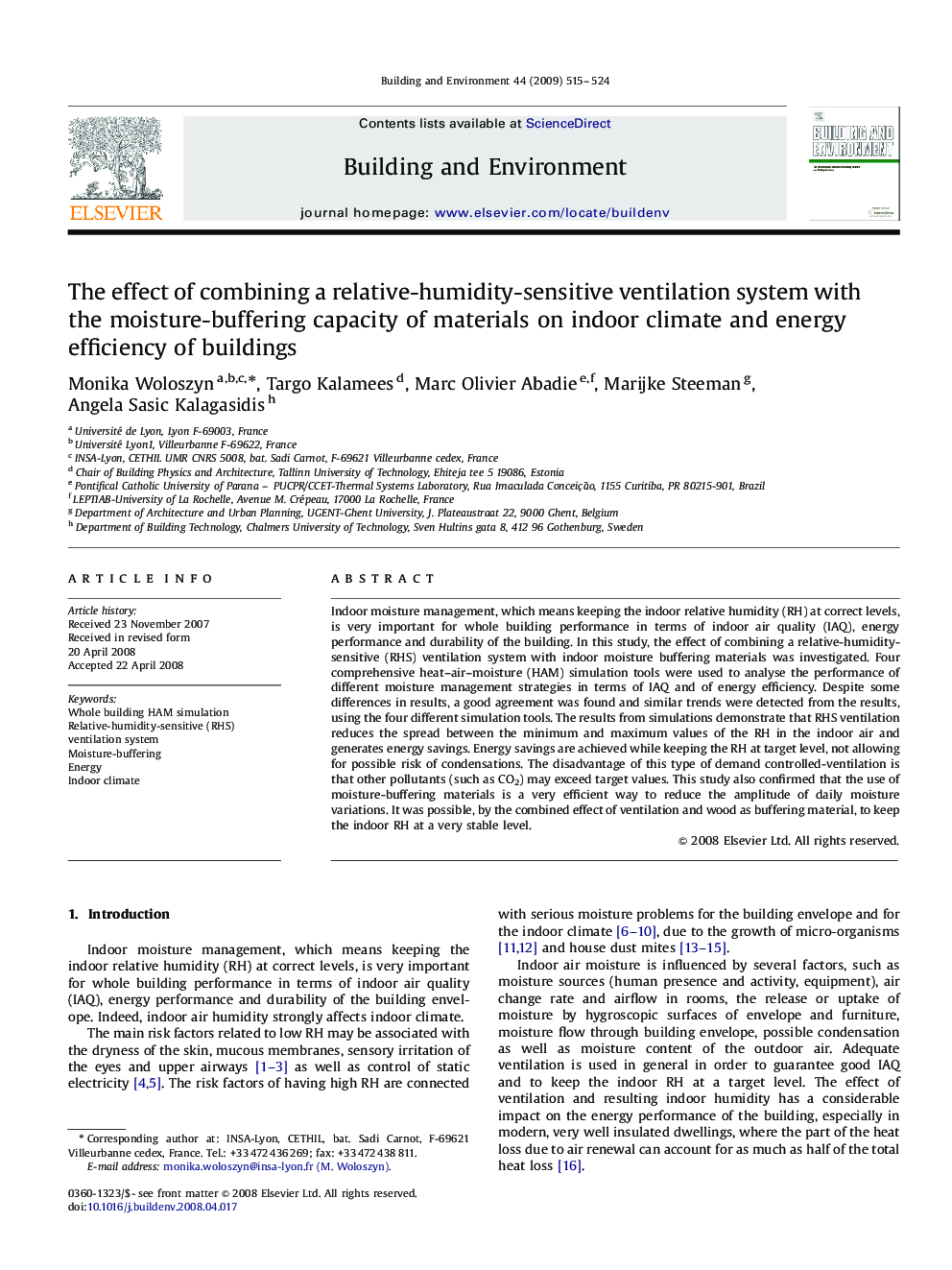| Article ID | Journal | Published Year | Pages | File Type |
|---|---|---|---|---|
| 249610 | Building and Environment | 2009 | 10 Pages |
Indoor moisture management, which means keeping the indoor relative humidity (RH) at correct levels, is very important for whole building performance in terms of indoor air quality (IAQ), energy performance and durability of the building. In this study, the effect of combining a relative-humidity-sensitive (RHS) ventilation system with indoor moisture buffering materials was investigated. Four comprehensive heat–air–moisture (HAM) simulation tools were used to analyse the performance of different moisture management strategies in terms of IAQ and of energy efficiency. Despite some differences in results, a good agreement was found and similar trends were detected from the results, using the four different simulation tools. The results from simulations demonstrate that RHS ventilation reduces the spread between the minimum and maximum values of the RH in the indoor air and generates energy savings. Energy savings are achieved while keeping the RH at target level, not allowing for possible risk of condensations. The disadvantage of this type of demand controlled-ventilation is that other pollutants (such as CO2) may exceed target values. This study also confirmed that the use of moisture-buffering materials is a very efficient way to reduce the amplitude of daily moisture variations. It was possible, by the combined effect of ventilation and wood as buffering material, to keep the indoor RH at a very stable level.
